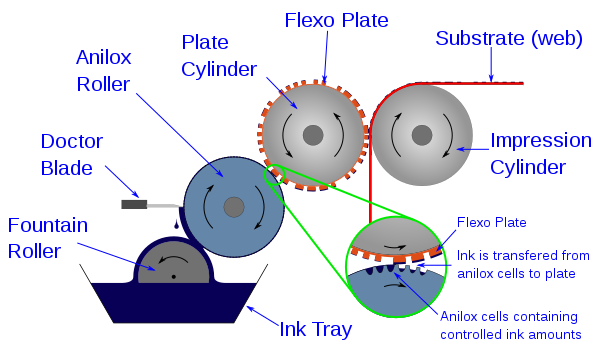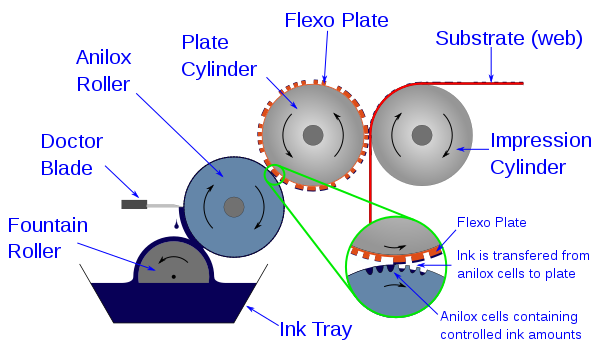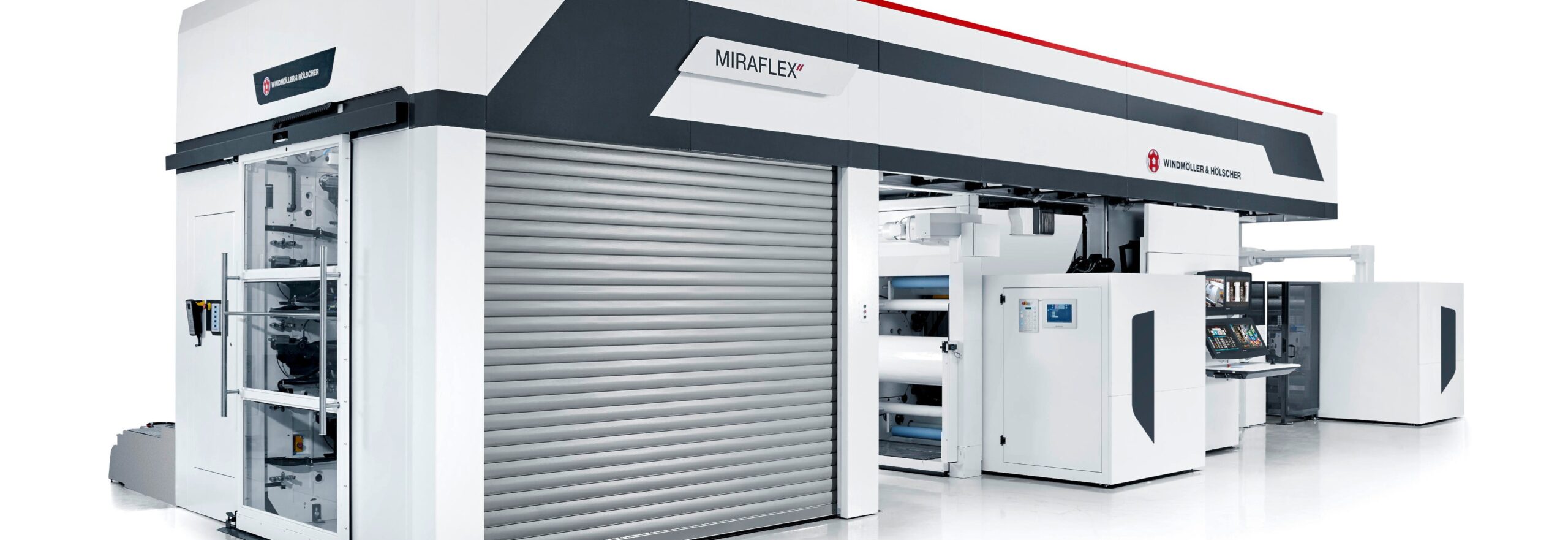Flexographic printing, often referred to as flexo printing, is a popular method of high-quality, high-speed printing used for a variety of packaging materials and labels. It is a type of relief printing process that involves using flexible relief plates made from rubber or photopolymer materials to transfer ink onto a substrate (such as paper, cardboard, plastic, or even metallic films).
Flexo printing is commonly used in industries such as food packaging, labels, corrugated cardboard boxes, flexible packaging (like plastic bags), and more. It has undergone significant technological advancements over the years, allowing it to compete with other printing methods like offset and gravure printing in terms of quality and efficiency.


Here’s how the flexographic printing process works:

- Plate Preparation: A flexible printing plate is created by either carving out the areas that are not meant to be printed (as in the case of rubber plates) or by exposing the plate to UV light through a mask (in the case of photopolymer plates). These processes create raised surfaces that will hold the ink.
- Ink Application: The ink is applied to the raised portions of the printing plate. The plate is rotated on a cylinder, and a doctor blade (a thin, flat metal strip) removes excess ink from the surface of the plate, leaving ink only in the recessed areas.
- Printing: The substrate is fed between the inked plate and a rubber impression cylinder. As the plate cylinder rotates, it transfers the inked image onto the substrate. Pressure is applied to ensure proper ink transfer.
- Drying and Curing: After the ink is applied to the substrate, it needs to dry or cure. In some cases, this is done using heat, air, or UV light, depending on the type of ink and substrate being used.
- Repeat Process: The process can be repeated for multiple colors. For multicolor printing, several plate cylinders are used, each containing the specific color needed for the final image.
Flexographic printing offers several advantages:
- High Speed: It is well-suited for high-volume production due to its fast printing speeds.
- Versatility: Flexo can be used on a wide range of substrates, including both absorbent and non-absorbent materials.
- Ability to Print on Irregular Surfaces: Its adaptability to various materials and shapes makes it suitable for packaging, labels, and more.
- Sharp and Vibrant Colors: Advances in technology have allowed flexo to produce high-quality images with vibrant colors and fine details.
- Economical: The cost per print is relatively low, especially for large production runs.